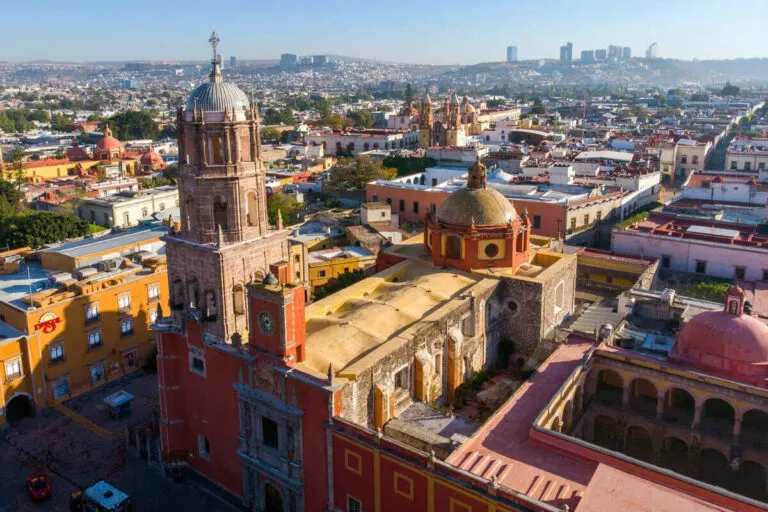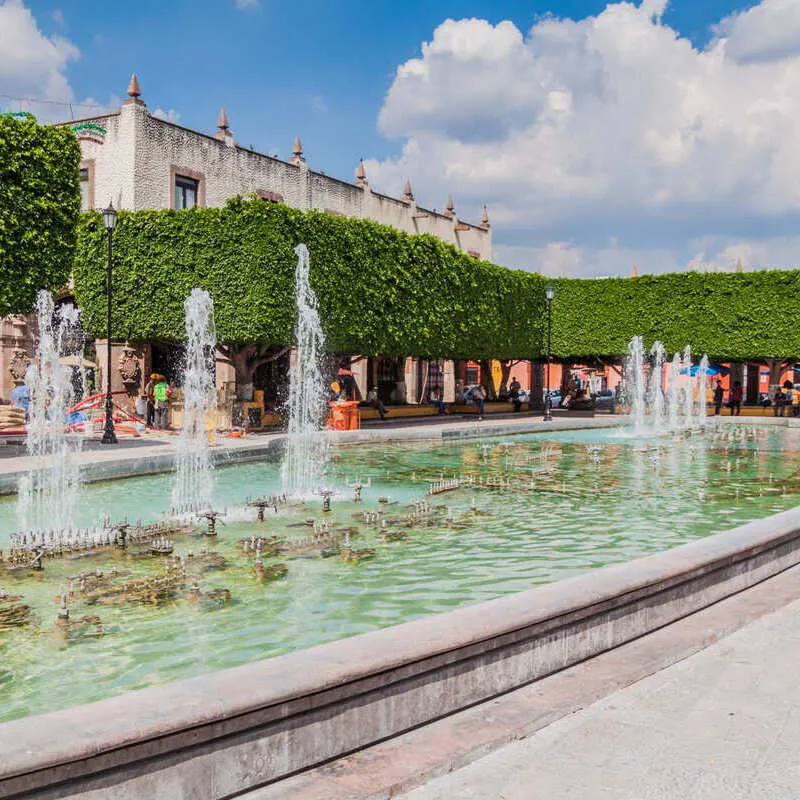It’s no secret that digital nomads have been flocking to Mexico lately, drawn to its year-round pleasant weather, hospitable locals, and thriving expat community.
Though it’s places like Mexico City and Cancun that have dominated talks in recent years, nomads are slowly discovering they’re not the country’s only available options, with two unexpected cities having risen in popularity in recent weeks:
This may be surprising to some, but the next ‘workcation’ hotspots south of the border are the often-overlooked Monterrey and the somewhat offbeat Santiago de Querétaro:
Why Are Monterrey And Querétaro Mexico’s New Nomad Hotspots?
According to Nomad List, the leading platform for tracking digital nomad trends, Mexico City remains the most popular city for remote workers relocating to Mexico, soon followed by Cancun, and that’s unlikely to change anytime soon.
If you’re looking for a vibrant social scene and a multitude of coworking centers, we doubt there’s a better-equipped metropolis in Mexico than its sprawling capital; as for the sun-loving nomads out there, there’s truly no beating the Mayan Riviera and its laid-back, tropical atmosphere.
What we didn’t foresee, however, is that the next destinations in line that have attracted nomads the most are not your usual tourism hubs: not Tulum, Puerto Vallarta, Acapulco, and certainly not overpriced Cabo––Monterrey is new in at number three, while Querétaro peaks at number four.
The question is, why are nomads hyping these up in particular when they’re not often on the average visitor’s itinerary, and perhaps more shockingly, even to the beach bums out there, they’re miles inland, away from the turquoise waters that lap the Mexican coast.
Let’s start with Querétaro:
Santiago de Querétaro
Though it’s one of the most traditional colonial-era cities in Mexico, with a high concentration of landmark churches and monuments, Santiago de Querétaro (or just Querétaro) is often overlooked by short-term and long-term visitors alike.
Its cathedral, the monumental St. Philip Neri, is an 18th-century Baroque-Neoclassical wonder with a richly-decorated facade, of the kind you’d most commonly expect of European churches, and its one of several religious and civic buildings dating back centuries.
Nearby the Church of St. Francis of Assis began construction as early as 1589, making it one of the oldest in the Americas, and the distinct, stone-built Church of St. Rose of Viterbo, with its tinges of pink, was raised in the golden era of now-bygone New Spain.
Other than its monumental temples, Querétaro is famous for its UNESCO World Heritage Site of a city center, with beautiful facades lining narrow streets, grand theaters, and art museums (not to mention a perfectly preserved 18th-century aqueduct).
As you can see, there’s no shortage of beautiful sights––and historical value––to be found here, but as for workcationers specifically, the biggest draw other than culture is the affordability compared to other large Mexican cities and the laid-back atmosphere:
Why Do Nomads Love Querétaro?
According to estimates provided by Nomad List, it costs an average of $1,862 to live in Querétaro per month.
Indeed, you can eat inexpensively in local restaurants for as little as $9.73, while renting an entire flat on Airbnb starts from an acceptable $603 per month.
It can definitely be pricier to live in if you’re used to eating at upscale restaurants, where a three-course menu will set you back by $43.25, or the equivalent in Mexican pesos, as calculated by Numbeo, and you’re looking for an exceptional stay apartment with a pool.
In the latter case, you should be prepared to pay between $1,101 and $1,614 per month for a fully-furnished flat in a well-equipped residential area or condominium in the heart of town, as seen on Airbnb––still reasonable, if you’re asking us.
Nomads also love Querétaro for its chill vibes, in comparison to the hectic Mexico City or the American-dominated Cancun: it still feels very authentic, as not that many tourists are going out of their way to visit, and there are plenty of green areas and leisure zones to be enjoyed.
As for work hotspots, Cafeteria La Duquesa is a hit among the nomad populace.
It serves local dishes at medium prices and offers ample seating and a cozy ambiance; Monono is just as popular for its laptop-friendly environment and delicious, made-on-the-spot mochas.
Monterrey
As for Monterrey, it is the third-largest conurbation in Mexico after the capital and its closest competitor, Guadalajara, and one that’s often been overlooked as a financial center culture-loving nomads have no business attending, except the stereotypes couldn’t be more wrong.
Yes, it’s best known for its automotive and electronics industries and, of course, for being a border city a stone’s throw away from Texas, but at its heart, Monterrey is a city where innovation and tradition coexist harmoniously.
In the midst of the sprawling urban mess, there’s a well-preserved historic center dotted with monumental landmarks.
Two notable examples are the Metropolitan Cathedral, famous for its arch-vaulted ship, and the Palacio de Gobierno, a Neoclassical government building.
At the same time, beyond the rather picturesque colonial-era center, there’s a sea of concrete and steel-and-glass skyscrapers fringed by the towering mountains of Nuevo León, and the kind of fast-paced living and cosmopolitanism city lovers are sure to appreciate.
Why Do Nomads Love Monterrey?
There are not that many cities south of the border, and by that we mean all of Latin America, that have collected accolades on quality of life and urban development, compared to much of the traditional ‘Global North’, and the fact Monterrey is one of them is significant:
In case you aren’t aware, a landmark 2018 study by the Cabinet Strategic Communications has found that San Pedro Garza García, a sub-municipality in the wider Monterrey Metropolitan Area, is one of the most livable cities in Mexico.
For instance, habitual residents––and nomads alike––benefit from a wide range of public transport options that make it easy for them to get around, from Metrorrey to the BRT-dedicated Ecovía, not to mention the moderate crime levels:
Compared to Mexico City or Guadalajara, thuggery and property crime are observed at lower rates in Monterrey; that’s not to say it doesn’t occur, but visitors (and this includes digital nomads) are not the usual targets, especially in highly-surveilled central zones.
On top of that, there’s at least 54 coworking spaces, as listed by Coworker, and countless more casual cafes nomads can seek refuge in, be it to catch up with work or socialize with likeminded individuals.
Last but not least, Monterrey is fairly affordable by Mexican standards, costing roughly $2,059 to live in, as seen on Nomad List: to put it plainly, as a nomad in Monterrey, you get to enjoy the global metropolis lifestyle, but for a small fraction of the usual high prices.
Credit: Source link











